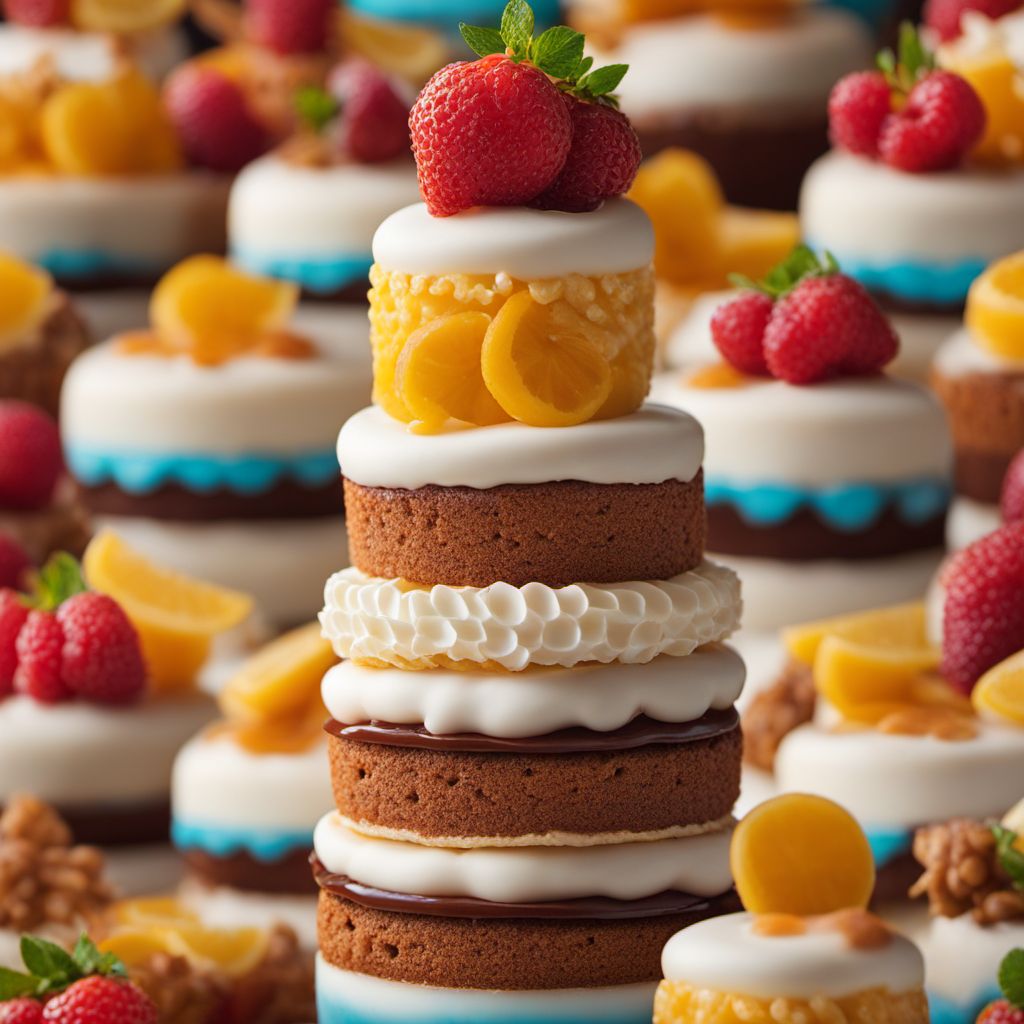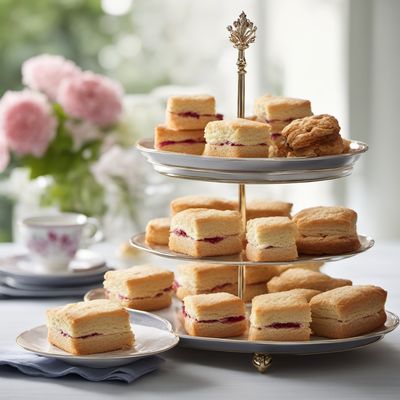
Ingredient
Cakes
The Art of Baking Delights
Cakes are a beloved dessert enjoyed worldwide, offering a wide variety of flavors, textures, and designs. From simple butter cakes to elaborate multi-layered creations, cakes have become an integral part of celebrations and special occasions.
Origins and history
The history of cakes dates back to ancient times, with evidence of cake-like treats found in Egyptian tombs. Over the centuries, cakes have evolved and spread across different cultures, each adding their unique twist to this delightful dessert. Today, cakes come in countless variations, reflecting the diverse culinary traditions around the world.
Nutritional information
Cakes can be a significant source of calories, fat, and sugar, depending on the ingredients and preparation methods. However, they can also provide essential nutrients like carbohydrates, proteins, and vitamins. Moderation is key when enjoying cakes as part of a balanced diet.
Allergens
Cakes may contain allergens such as wheat, eggs, milk, and nuts. It is important to check the ingredient list or consult with the baker if you have any specific allergies or dietary restrictions.
How to select
When selecting a cake from a bakery or supermarket, consider the freshness, appearance, and reputation of the establishment. Look for cakes that are moist, evenly baked, and free from any signs of spoilage or damage. If possible, opt for cakes made with high-quality ingredients and without artificial additives or preservatives.
Storage recommendations
To maintain the freshness and quality of a cake, store it in an airtight container or cover it tightly with plastic wrap. Keep it at room temperature for a day or two, depending on the type of cake. If the cake has perishable fillings or frostings, refrigerate it to prevent spoilage. For longer storage, cakes can be frozen, but it is essential to wrap them well to prevent freezer burn.
How to produce
Producing a cake at home requires basic baking skills and a good recipe. With the right ingredients, equipment, and techniques, anyone can create a delicious cake. Follow the recipe instructions carefully, paying attention to measurements, mixing methods, and baking times. Practice and experimentation will help improve your cake-baking skills over time.
Preparation tips
Preparation instructions and tips for cakes can vary greatly depending on the recipe and desired outcome. Follow the recipe instructions carefully, ensuring accurate measurements and proper mixing techniques. Use room temperature ingredients for better incorporation and texture. Allow cakes to cool completely before frosting or decorating to prevent melting or sliding. Experiment with different flavors, fillings, and decorations to create your unique cake creations.
Culinary uses
Cakes are incredibly versatile and can be customized to suit various occasions and preferences. They can be enjoyed plain or adorned with frosting, glazes, or fillings. Cakes can be layered, stacked, or shaped into different forms, making them suitable for birthdays, weddings, holidays, or everyday indulgence.
Availability
Cakes are available worldwide, with each culture having its unique cake traditions. From the classic sponge cakes of England to the rich fruitcakes of Germany and the delicate chiffon cakes of Japan, cakes are a universal dessert enjoyed across borders.


